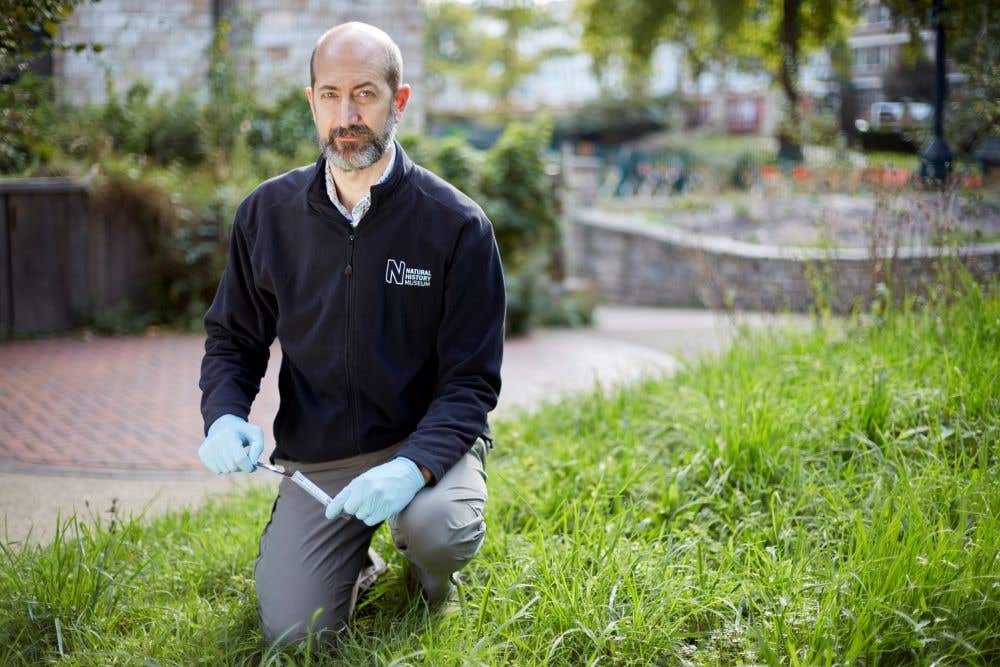Natural History Museum creates gardens to study how wildlife reacts to climate
Sensors installed across the site will monitor conditions like temperature, humidity and sound.

Your support helps us to tell the story
From reproductive rights to climate change to Big Tech, The Independent is on the ground when the story is developing. Whether it's investigating the financials of Elon Musk's pro-Trump PAC or producing our latest documentary, 'The A Word', which shines a light on the American women fighting for reproductive rights, we know how important it is to parse out the facts from the messaging.
At such a critical moment in US history, we need reporters on the ground. Your donation allows us to keep sending journalists to speak to both sides of the story.
The Independent is trusted by Americans across the entire political spectrum. And unlike many other quality news outlets, we choose not to lock Americans out of our reporting and analysis with paywalls. We believe quality journalism should be available to everyone, paid for by those who can afford it.
Your support makes all the difference.The Natural History Museum (NHM) is creating hi-tech gardens full of sensors to look at how wildlife reacts to the climate, and how and why it is changing.
The gardens will also allow researchers to look at the kind of life that makes these gardens home, from insects and frogs to tiny microscopic organisms invisible to the human eye.
Sensors installed across the site will monitor conditions like temperature, humidity and sound.
While there are some five acres of grounds surrounding the NHM site in London, for more than 25 years only one small corner has been a dedicated wildlife area.
We're really trying to build as much information as we can around the richness of wildlife we have in our gardens, so we can start to track how and why it's changing
Scientists are now working to create a garden across the entire area as part of a living gallery, which will open to the public towards the end of next year.
The gardens will tell the story of evolution of life on Earth, taking people through palaeontology sciences as they move from east to west.
Then as they move towards the west, just past the main entrance to the museum, the garden will reflect the modern day, focusing on what can be done to protect nature.
Working with Amazon Web Services (AWS), the museum will also create a new data platform – the Data Ecosystem.
This will help researchers build a deeper understanding of the UK’s urban biodiversity, including its composition, how it relates to environmental conditions, and how it responds to direct conservation action.
Scientists will be able to study biodiversity data types, alongside environmental data such as soil and atmospheric chemistry or noise pollution, rapidly and accurately.
Combined with access to the NHM’s 27 years of historical wildlife data from its South Kensington gardens, this will build an increasingly detailed picture of the biodiversity in the museum’s gardens.
Dr John Tweddle, head of the Angela Marmont Centre for UK Biodiversity at the Natural History Museum, said: “We’re really trying to build as much information as we can around the richness of wildlife we have in our gardens so we can start to track how and why it’s changing.
“And then use that in a really positive way to help recover this nature in towns and cities, whether that’s us or whether it’s individuals and community groups.”
He added the museum’s scientists are “excited” to have the opportunity to “be at the cutting edge of ecology within and around our own site by bringing together these different methods and starting to look at how we can analyse very big, very different datasets to really explore these patterns in nature, and then apply it for conservation and communicate that to people visiting”.
Researchers hope to observe as wide a diversity of life as possible, including common frogs, toads and smooth newts in the ponds, azure damselflies, willow emerald damselflies, bluebells, and birds like robins and goldfinches in the wooded areas.
Hundreds of pollinating insect and wildflower species in the meadow and chalk grassland, including up to 20 species of bumblebee, will also form part of the study.
By building the Data Ecosystem on the AWS Cloud, the museum can capture, store, combine and compare data in a secure, resilient and scalable way.
Darren Hardman, vice-president and general manager for the UK and Ireland at AWS, said: “Gaining access to a wide range of data is crucial for the museum’s scientists to build a better understanding of the UK’s urban biodiversity and help address the planetary emergency.
“Cloud is an important enabler for this. For the first time, scientists will have a way to securely store and process research data using the Data Ecosystem, which can easily scale up as more and more data is collected over time.”